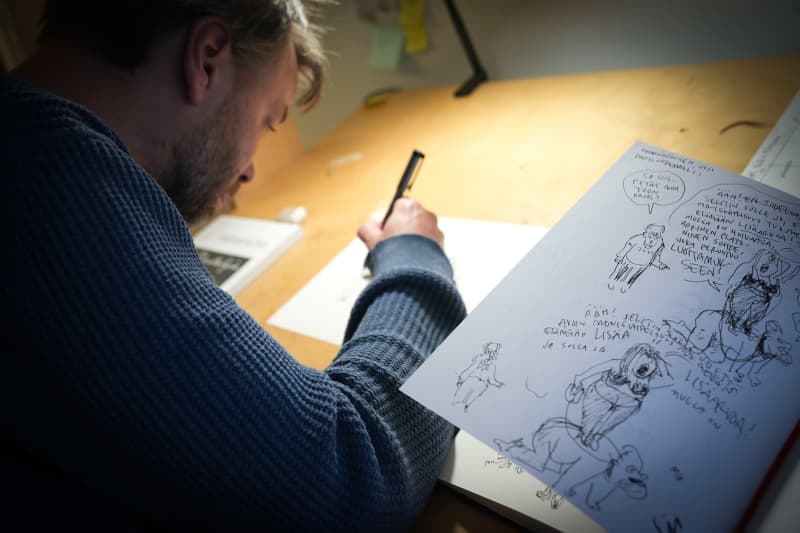
Cartooning as a genre is doing poorly because, according to cartoonist Ville Ranna, the public’s taste is narrow. Social media also shuddered when it was thought about whether there are women in the field.
– Caricature is doing badly as a sport, it is in danger of suffocation, Ville Ranta surprises despite his success.
Ville Ranta told about his view in Kulturiykkönen’s discussion on Tuesday.
In a couple of years, Ranta has become the best-known and most successful author of domestic cartoonists in Finland. Ranna, who draws for Iltalehti, has the courage to poke satirically at all political directions. Erdogan’s price list of insults sketch had little effect even on Finland’s path to NATO.
According to Ranta, compared to the broad range of styles in comics, the subjects and methods of handling in cartoons are narrow and routine and lack diversity.
The discussion about women in the industry bubbled up
The profession of cartoonists in major newspapers is male and mostly middle-aged. The industry has just gone through a generational change, but women still shine through their absence in high visibility.
– This broke the camel’s back. I’ve heard this same thing before and I can’t take it anymore. I’m here and I’m doing this! Yes, there are women who draw, Moksi said in a conversation on Tuesday.
– If the general public doesn’t recognize them as funny? Topics can be, for example, things arising from combining everyday life, work and family.
Ville Ranta and Sira Moksi stated in the discussion that cartoonists are often, especially at the beginning of their careers, vilified and the target of hate speech. This can scare many women away from entering the industry.
– You get used to everything, even death threats. But over time the leather gets tanned and I gain visibility through unpleasant experiences, said Sira Moksi.
For example, a freelancer making cartoons on social media can also be in a very unsafe position legally if someone sues the object of the humor. Ville Ranta was recently sued for violating religious peace.
– Fortunately, I have Iltalehti’s lawyers on my side. Without it, I would have been in a really difficult situation.
Popularity requires work and luck
Becoming a popular cartoonist requires long-term work and good luck. Among other things, Jyrki Vainio, who draws for Ilta-Sanom, wrote on Twitter that he aimed for 10 years determinedly to create a professional career.
During his twenty-year career, Ville Ranna has often been offered cartoonist jobs, but he actively sought the top position in Illetehti when he was short of money.
The Internet opens up new opportunities. Riina Tanskanen has gained a huge audience with her Tympeät työts illustrations on Instagram, and her albums are selling well. Tanskanen was also awarded the state award for information disclosure last year.
The rise of female artists would be possible just as has happened with Finnish stand-up comedy. But first you have to overcome your prejudices.
Sira Moksi has often received feedback about his grotesque style, which deviates from the mainstream, that it is not suitable for political satire.
– The magazines also need the courage to adopt a different visual style. My pictures shocked people at first when they show vomiting and childbirth and politicians are half animals. But provoking has helped me move forward in my career.
*What kind of thoughts does the news evoke? You can discuss the cartoons until 23:00 on April 6, 2023.*
*Correction 4/5/2023 at 3:43 p.m.: The news previously erroneously read that Sira Moksi would also make caricatures for Kansan Uutisi.*
